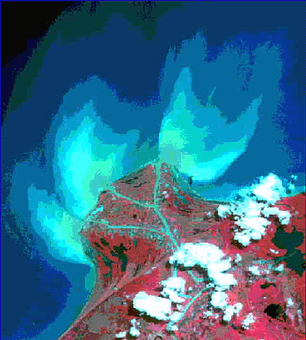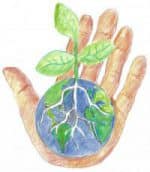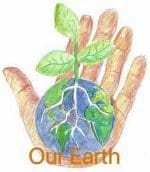Remote sensing
Remote sensing is an important tool for the gathering of Earth Information. It involves monitoring and assessing the status of, and changes in the natural and man-made environment.

Sinu river delta, Colombia - Aster satellite image processed in false colors
In recent years, Remote sensing has become more and more sophisticated with the development of air- and space-borne systems, including 3-D visualization and modelling.
It is therefore an important tool for geomorphological terrain mapping, together with the analysis in time and space of natural and man-induced hazards such as landslides, floods, earthquakes, desertification, soil degradation and volcanic eruptions.
NASA IntroductionVideo
IRES Fellow and NASA Chief Scientist Waleed Abdalati and CIRES Fellow Steve Nerem explain Remote Sensing and how it is used to study our planet.
The Canada Centre for Mapping and Earth Observation is pleased to offer this tutorial on remote sensing technology and its applications. This interactive module is intended as an overview at a senior high school or early university level and touches on physics, environmental sciences, mathematics, computer sciences and geography.
QGIS 3.10 Software
(Quantum GIS - Open Source)
Tutorial and Download Instructions
(GISGeography.com)
 QGIS User Guide
QGIS User Guide
QGIS Training Manual
Remote Sensing Platforms
(GISGeography.com)
Remote Sensing Datasets
Free Download
(GISGeography.com)
Landsat Satellite Data (USA)
Sentinel Satellite Data (ESA)
Digital Elevation Data (USA)
Shuttle Radar Topography Mission (SRTM 30 m)











